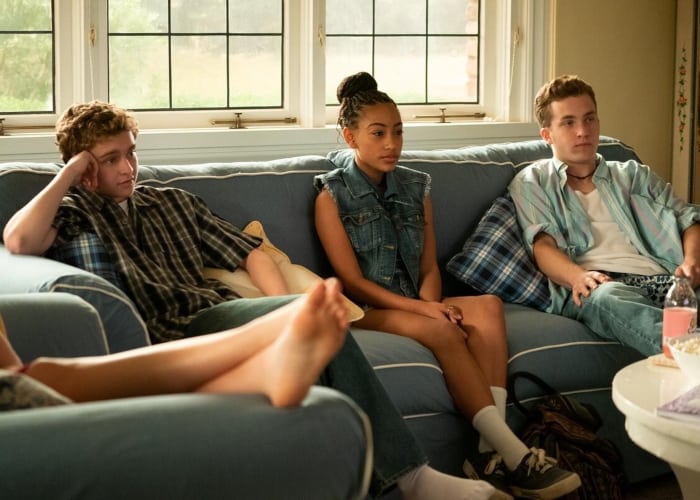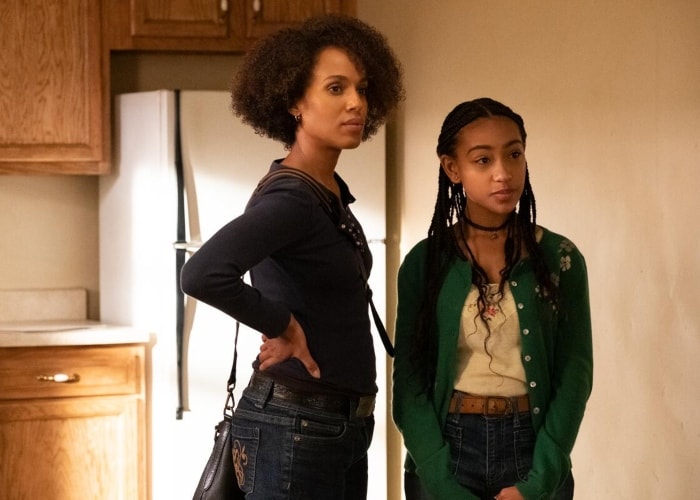Between Castlevania and The Witcher, Netflix has really cornered the market on mature video game adaptations about monster hunting. Look, everyone needs a niche.
The third season of the former has finally descended upon our Netflix queues (and it’s truly a well-earned capital-m Mature in this season, I might add). Where most video game adaptations miss the mark, the animated series has consistently distinguished itself by doing right by its source material, capturing the gore, atmosphere, and gothic gait of the Konami series with the added bonus of a sharp wit and a deliciously dark charm. Plus, we’ve been spoiled with two more episodes than last season. Lucky us!
Note: light spoilers for Castlevania Season 3 ahead.
The dust has settled after the upheaval of the Season 2 finale. Trevor (voiced by Richard Armitage), the last surviving member of the infamous monster-slaying Belmont clan, has fully abandoned his lone-wolf lifestyle and now roams the country with the powerful, kind-hearted sorceress Sypha (Alejandra Reynoso) killing beasties. While the scheming vampire Carmilla (Jaime Murray) marches homeward in the hope that the captive monster-making Hector (Theo James) will build her an army, the misanthropic Isaac (Adetokumboh M’Cormack) is raising hell, quite literally, in the desert. And of course, there’s Alucard (James Callis), getting used to solitude after killing his own father, Vlad Dracula Tepes.
As with previous seasons, the lead performances in Castlevania remain a complete and utter joy. I didn’t know how they were going to top Peter Stormare’s vocal appearance as a Viking vampire in Season 2, but Jason Isaacs as a tight-fisted mayor whose town is slipping through his grip and Bill Nighy as a mysterious academic will absolutely do the trick. Plus Barbara Steele as a mad witch and Lance Reddick as a story-loving ship captain? My god!
Also, a complete and utter delight to see (well, hear) Navid Negahban, this season’s winner of the coveted “weirdest and most captivating vocal performance” award by a long shot. The night creature who regales Isaac with stories of his previous life as a philosopher in Ancient Greece is a close second.
Season 3’s focus is again split between different storylines. Trevor and Sypha’s chapter is wildly engaging and sees the pair grappling with both monsters and the grim realities of what it means to share a difficult life with someone you love. I am not going to divulge the narrative details because their storyline is really best revealed than retold. Suffice to say: Castlevania may very well have turned in a better adaptation of Color Out of Space than Richard Stanley did.
Isaac’s storyline is another standout, testing and adjusting the boundaries of the forge master’s hatred for mankind as he makes his way across the world with his steadily-expanding army of night creatures. Of course, some subplots are weaker than others. Carmilla’s storyline has one foot stuck in narrative mud, with a quartet of ambitious female vampires unable to do much while they wait to secure Hector’s ability to make them an army.
The scenes between Hector and the vampire diplomat Lenore are compelling, but compared to the other storylines, their pace feels glacial. Alucard’s plot undoubtedly features the weakest writing, pacing, and performances of the season (and arguably the series). And while his final character beat works on paper, the long, tedious, circular walk it takes cheapens what could have been a much stronger moment.
Where Season 2 canters thematically on the consequences of giving up on the world, Season 3 is more concerned with the difficulties of fighting for it: how to process the exhaustion, horror, and frustration of giving mankind a shot and repeatedly coming out disappointed. It is, unfortunately, an evergreen concern. All told, Season 3 of Castlevania delivers the gory, gothic goods. And while we’ve come to expect good things from the series, its success as an adaptation of a video game remains something of an anomaly.

Along with death and taxes, one of the few certainties in life is that video game adaptations tend to be a letdown. While I’m not terribly partial to presuming guilt, the precedent is well-established. We’ve been burned many times. Be it by the notorious string of late-’90s to mid-2000s turkeys (Postal, Alone in the Dark, Mortal Kombat: Annihilation, etc.) or by more recent big-budget offenders (Assassin’s Creed, Warcraft, Need for Speed, etc.). A few cult favorites have emerged over the years (Silent Hill is receiving something of a quiet renaissance right now), but let’s just say there’s something to the half-joke that the best game adaptation out there is 1985’s take on Clue.
That said, Castlevania’s ongoing high batting average and the recent success of The Witcher have got me thinking. I’m starting to wonder if Netflix might be especially (if not uniquely) suited to adapting not just video games, but the kind of video games that Hollywood has historically struggled to adapt. To really unpack that, first, we need to talk about video games as a medium versus “video game adaptations” as a genre.
When we’re talking about aesthetic and narrative taxonomies, thinking of “video game adaptations” as a genre is not actually that helpful. Affiliating Borderlands and Street Fighter makes about as much sense as lumping Dune and Emma together on the basis that they’re both books. And yet, the classification persists.
Different games have different tropes, different appeals, different contexts of creation, and different approaches to storytelling. But when it comes to “video game adaptations” as a genre, none of that really matters. Instead, when people use “video game adaptation” as a genre, they usually mean two things: first, that these are films based on content from an interactive medium; second, that most of these films are garbage.
The latter point has become the assumed qualifier of the genre, in large part because of the former point. In other words: adapting video games is often an exercise in trying to shove a round peg through a square hole. Film and television are passive entertainment, games are active, and as a result what makes a game special tends to get lost in the sauce.
So why is Netflix a better space for adapting video games?
Most video games don’t have linear narratives. They don’t stick to “and then.. and then… and then…” storytelling and often have side missions, tangents, and fetch-quests that don’t immediately serve the main narrative. And it can be difficult for movies to account for the episodic nature of gameplay. But TV series are different: there’s an in-built fragmentation that allows for less one-track way-finding.
An example of this from Castlevania: Trevor and Sypha are basically living out a gothic cowboy serial, roaming from town to town, battling hellish beasties du jour. Likewise, Isaac also has a more intermittent trajectory, and his arc this season operates as unique chapters with their own challenges distinct from his larger, big-picture goal. I have to wonder if this amount of deviance from the beaten path would be possible in a film with a 90-minute runtime.
Another reason I think streaming, specifically, is well-suited to video game adaptations is that binge-watching has a similar mouth-feel to how folks tend to play video games. Most games have “checkpoints” of some kind where a task/mission/goal is accomplished and you have an implicit opportunity to stop playing. But most folks don’t; they lie to themselves and say “just 15 more minutes” and push forward. Sound familiar? Obviously watching Netflix in bed is still passive entertainment, but repeatedly indulging the “next episode” prompt is an added wrinkle that feels a bit like an echo to the rhythms of gameplay.
In any case, regardless of whatever supportive boons the streaming format affords, the real reason Netflix has cracked video game adaptations has a lot to do with the show-runners’ evident understanding and respect for what makes their source material tick. With Castlevania specifically, there is a real sense that the folks behind the scenes have tapped into the timbre of how the games feel.
The plot of most Castlevania games (and most games for that matter) could fit on a post-it note. So much of the appeal and the storytelling that goes on in games happens in places outside of “and then…and then…and then…” narratives. It’s in the art design, the mechanics, the difficulty, and the details — things you wouldn’t have a chance to notice if you were sprinting towards the finish line through a dramatized Wikipedia plot summary. Netflix’s Castlevania may deviate from its source material in some respects, but it has always been spiritually and emotionally faithful. And that’s what sets it apart.
So, if Netflix continues to hire folks who care about preserving the unique feel and storytelling of game titles, and if I’m right that there’s something about streaming that is especially suited to video game adaptations, then we’re in for a treat. Because Netflix is reportedly developing animated adaptations of Devil May Cry, Assassin’s Creed, and Hyper Light Drifter. And wouldn’t it be great to look forward to adaptations of video games rather than auto-bracing for disappointment? I think so.
All three seasons of Castlevania are currently streaming on Netflix.

